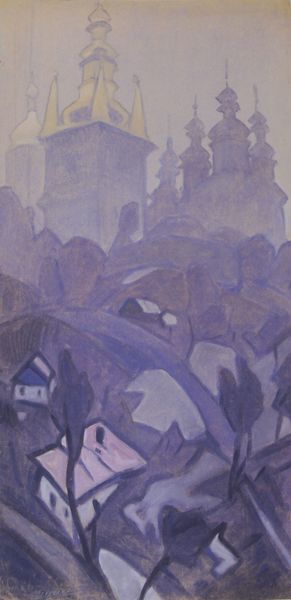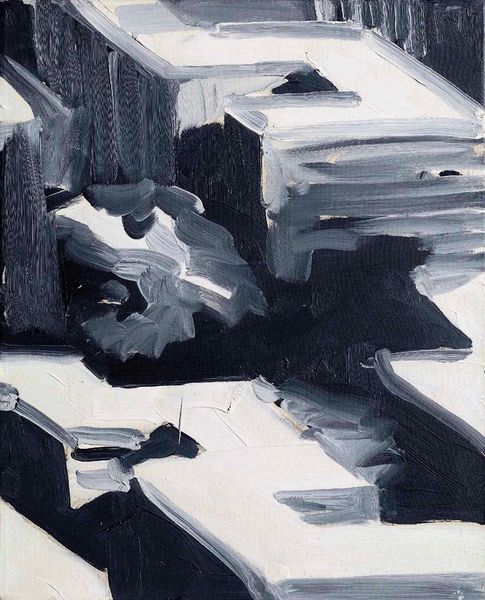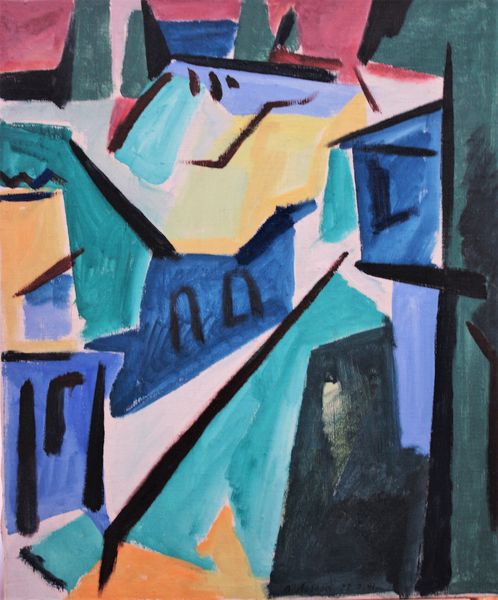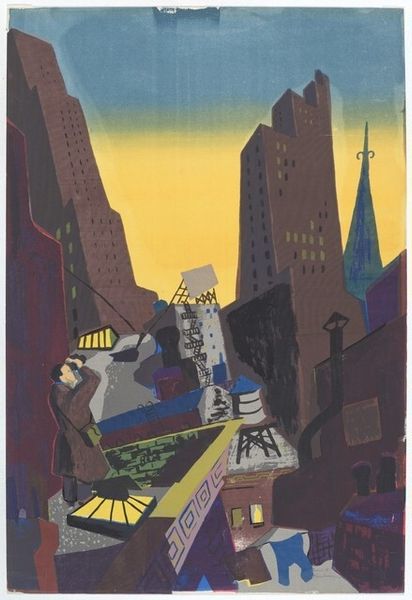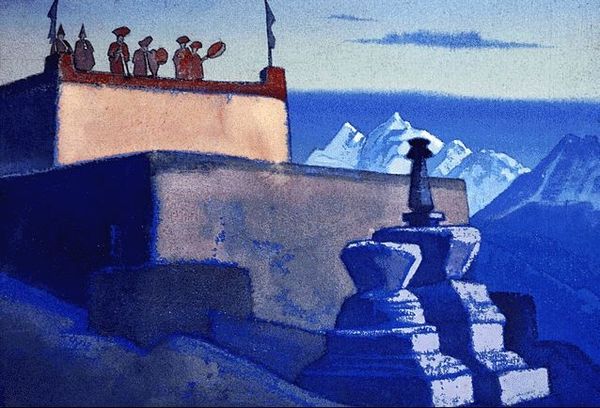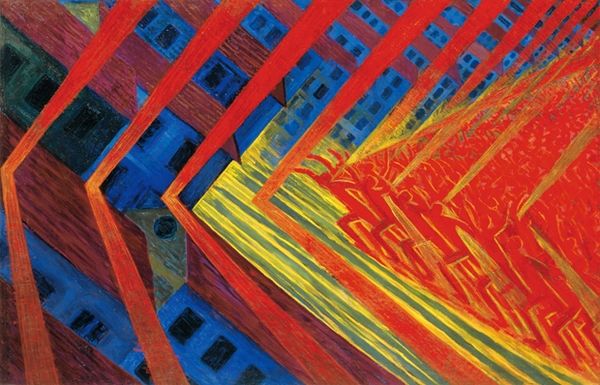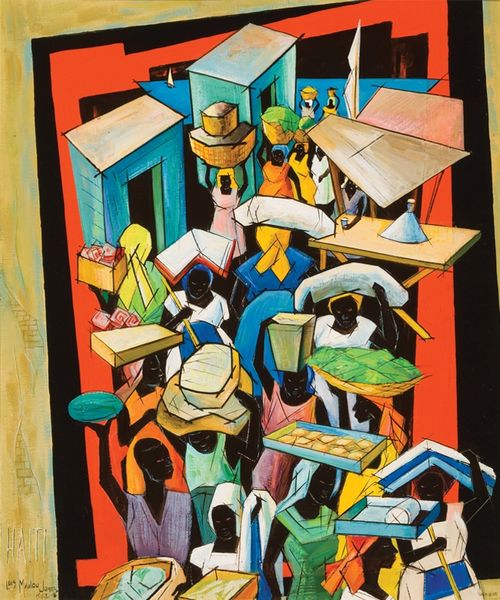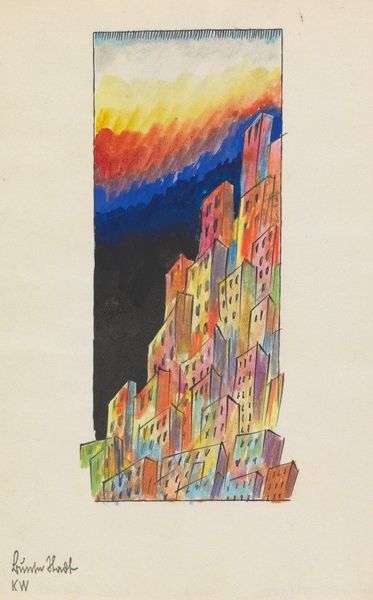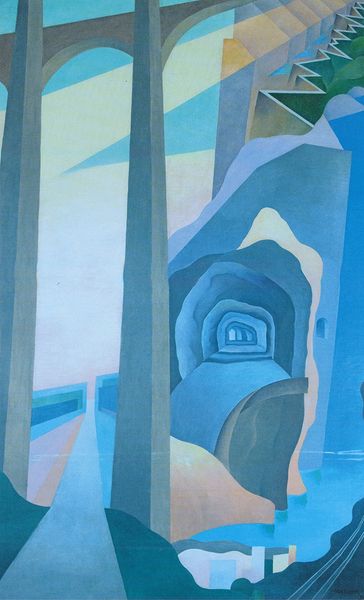
painting, oil-paint, impasto
#
narrative-art
#
painting
#
oil-paint
#
figuration
#
oil painting
#
impasto
#
expressionism
#
cityscape
#
street
#
modernism
Dimensions: 66 x 39 cm
Copyright: Public domain US
Editor: Here we have Martiros Sarian's "A Street. Noon." painted in 1910 using oil paints. It's a captivating piece; the sharp contrast of the vibrant street against the shadowy buildings is quite striking. What stands out to you most in this composition? Curator: Formally, observe how Sarian articulates depth. He achieves this primarily through linear perspective, guiding the viewer's eye toward a vanishing point in the distance. The use of impasto—thick applications of paint—creates a textured surface. What effect does this surface treatment have on the viewer's perception of the light within the painting? Editor: I guess the texture makes the light feel more palpable, almost like you could reach out and touch it. It's not just flat color; it's light rendered as a physical entity. Curator: Precisely. Consider also the chromatic relationships. The dominant blues and yellows are nearly complementary, creating visual tension and enhancing the sensation of bright sunlight despite the restricted palette. What alternative methods could Sarian have used to render shade and light? Editor: Well, he could've used chiaroscuro, that dramatic contrast of light and shadow, like in Baroque paintings. Curator: Yes, but note how Sarian's chosen method aligns more closely with expressionistic ideals. The emphasis shifts from accurate representation to the conveyance of an inner experience or emotional state through color and form. Sarian bends conventional perspective, using a complementary color scheme, so that we might contemplate form. Editor: That makes a lot of sense. I hadn't considered how much the technique contributes to the emotional impact, rather than just representing light and shadow. Thanks, that's really insightful. Curator: And by deconstructing and re-assembling the constituent elements of the artwork, we see how much formal elements reveal a cohesive artwork.
Comments
No comments
Be the first to comment and join the conversation on the ultimate creative platform.
